This article was co-authored by Margareth Pierre-Louis, MD. Dr. Margareth Pierre-Louis is a board certified Dermatologist and Dermatopathologist, Physician Entrepreneur, and the Founder of Twin Cities Dermatology Center and Equation Skin Care in Minneapolis, Minnesota. Twin Cities Dermatology Center is a comprehensive dermatology clinic treating patients of all ages through clinical dermatology, cosmetic dermatology, and telemedicine. Equation Skin Care was created to provide the best in evidence-based, natural skin care products. Dr. Pierre-Louis earned a BS in Biology and an MBA from Duke University, an MD from the University of North Carolina at Chapel Hill, completed a residency in dermatology at the University of Minnesota, and completed a dermatopathology fellowship at Washington University in St Louis. Dr. Pierre-Louis is board certified in dermatology, cutaneous surgery, and dermatopathology by the American Boards of Dermatology and Pathology.
There are 12 references cited in this article, which can be found at the bottom of the page.
This article has been viewed 96,016 times.
Before paying a lot of money at a dermatologist’s office to treat an uneven skin tone, try a few home remedies. Start exfoliating your skin once a week, add a retinol serum to your nighttime skincare routine, or adopt one of the other multiple options for minimizing dark spots or redness. If at-home treatments don’t work after about 4-8 weeks, check into laser treatments or microdermabrasion. Finally, make it a priority to wear sunscreen every day and stay hydrated to promote an even skin tone.
Steps
Reducing Dark Spots and Redness
-
1Exfoliate your entire body once per week to slough away dead skin cells. Your arms, legs, and torso also have dead skin cells that need to be scrubbed away to reveal brighter, more even skin underneath. Especially in the dryer months, exfoliating can really help your skin look bright and healthy.[1]
- Look for products that contain salicylic acid. It easily removes dead skin cells and is especially great if you have acne-prone skin.
- Your skin might feel tight after you exfoliate, so follow up with a moisturizing lotion.
Tip: If at-home remedies don’t work for you after 1-2 months of consistent application, book an appointment with a dermatologist. They’ll be able to figure out the exact cause of your uneven skin tone and prescribe the most effective treatment plan.
-
2Use a glycolic peel once per week to fade dark spots and acne scars. Target areas that have dark spots on your face, arms, legs, and torso. Avoid getting the peel on your nostrils, lips, and eyelids. Make sure to moisturize and stay out of the sun for a few days afterward.[2]
- Purchase glycolic peels from a spa, beauty store, or dermatologist.
- Anticipate some redness after using the peel. [3]
Advertisement -
3Brighten the skin on your face, arms, and legs with a vitamin C serum. Vitamin C combats damage done to your skin by the sun. It lightens and brightens your skin. Rub 2-3 drops of the serum into your skin where you see uneven spots.[4]
- Vitamin C can also reduce inflammation and help prevent acne.
Tip: Test the vitamin C serum on your inner wrist before applying it to your face or the rest of your body. Wait 24 hours to see if your skin shows any sign of irritation.
-
4Use a retinol serum at night before bed to fade dark spots. This is also sometimes called an AHA (alpha hydroxy acid) cream. It fades dark spots and prevents more from forming. Experts recommend using it at night because it breaks down and isn’t as effective in the sunlight.[5]
- After using retinol serum consistently for 4-6 weeks, you should notice a more even skin tone.
Warning: Don’t use retinol if you’re pregnant. Retinoids contain vitamin A, which can be harmful to the fetus if taken in high doses.
-
5Combat redness by applying a soothing cream every day. Look for a cream that includes niacinamide (vitamin B3), which will reduce pores, even your skin tone, and minimize wrinkles and redness. Apply the cream once a day to inflamed areas on your face, arms, and legs.[6]
- This type of cream can be especially helpful for elbows and knees, which are often more susceptible to inflammation.
- If you’ve never been to a dermatologist, it might be a good idea to make an appointment. If you’ve always struggled with red, inflamed skin, you may have undiagnosed rosacea.
Receiving Professional Treatments
-
1Combat mild hyperpigmentation on your entire body with microdermabrasion. Microdermabrasion doesn’t involve any type of chemical product. It’s an exfoliating treatment that essentially sands away layers of dead skin. It’s a great option if you are worried about lingering redness after treatment as there is basically no recovery time needed.[7]
- Most people need 3-6 treatments, and each treatment costs between $100-$600.
-
2Book a chemical peel to remove the top layer of uneven skin. Chemical peels are a bit more invasive and will require a little bit of recovery time before the redness in your skin goes away.[8] A basic peel removes your epidermis from the targeted area, while more in-depth peels get all the way down past the dermis.[9]
- Chemical peels can cost anywhere from $100-$1000 a session. Most people need 3-6 treatments.
- Chemical peels are most often used on the face, but they can also be used just as effectively on other parts of your body.
-
3Brighten your skin tone over your entire body with microneedling. With this method, your dermatologist essentially injures your skin with hundreds of tiny needles so it can rebuild itself with more collagen and higher elasticity. You can combine treatment with topical creams or serums to brighten your skin and even out the tone even more. Anticipate redness and sensitivity for 24-48 hours after the treatment.[10]
- Plan on completing 3 treatments at $300 to $1750 each. Treatments are usually spread out every 6 weeks.
- This type of treatment is also recommended to reduce stretch marks.
-
4Consider getting laser treatments to diminish scars and rosacea. Your dermatologist will use a laser to break up and remove the different pigments in your skin. With the right application, they can lighten dark spots so they match the rest of your skin tone.[11]
- Laser treatments can cost anywhere from $250-$2500 depending on the extent of the treatment. Most people need 6 or more treatments with 4 weeks between each one.
Preventing Skin Damage
-
1Wear sunscreen every day to protect your skin. The sun activates the cells that cause dark spots, so any exposure to the sun puts you at risk for developing an uneven skin tone.[12] Apply sunscreen to your face, hands, arms, legs, and any other part of your body that will be exposed to the sun. Use it every day, regardless of the weather forecast.[13]
- If you’re outdoors, reapply your sunscreen every 2 hours. If you’re indoors, reapply it midday.
- If you wear makeup, put sunscreen on underneath of your makeup or use a foundation that includes SPF.
-
2Stay out of the sun during the brightest hours from 10 am to 2 pm. Your skin will experience the most damage during these peak hours, so plan to stay indoors or in the shade if possible. If you can’t avoid being in the sun, wear long sleeves, pants, and a hat to protect your skin even more.[14]
- If you feel like you need to be in the sun to get vitamin D, try taking a supplement instead.
-
3Drink 12 to 16 cups (2,800 to 3,800 mL) of water daily to stay hydrated. Each individual is different as far as how much water they’ll need to stay hydrated. On average, men need about 16 cups (3,800 mL) of water and women need about 12 cups (2,800 mL). If you exercise, you’ll need even more to replenish your fluids.[15]
- When you get dehydrated, your skin gets dry and is more susceptible to dry patches, which in turn can get inflamed.
- If you struggle to drink enough water every day, try drinking a big glass of water first thing after you wake up in the morning.
-
4Avoid picking at pimples or dry patches of skin to minimize scarring.[16] Popping pimples or picking scabs will create dark spots on your skin. As hard as it can be, try your best to keep your fingers away from your face and other irritated areas.[17]
- If picking at your face is a nervous tic, find something else to do when you get that itch, like snapping a rubber band.
Expert Q&A
Did you know you can get expert answers for this article?
Unlock expert answers by supporting wikiHow
-
QuestionHow can I regain elasticity in my skin?
 Margareth Pierre-Louis, MDDr. Margareth Pierre-Louis is a board certified Dermatologist and Dermatopathologist, Physician Entrepreneur, and the Founder of Twin Cities Dermatology Center and Equation Skin Care in Minneapolis, Minnesota. Twin Cities Dermatology Center is a comprehensive dermatology clinic treating patients of all ages through clinical dermatology, cosmetic dermatology, and telemedicine. Equation Skin Care was created to provide the best in evidence-based, natural skin care products. Dr. Pierre-Louis earned a BS in Biology and an MBA from Duke University, an MD from the University of North Carolina at Chapel Hill, completed a residency in dermatology at the University of Minnesota, and completed a dermatopathology fellowship at Washington University in St Louis. Dr. Pierre-Louis is board certified in dermatology, cutaneous surgery, and dermatopathology by the American Boards of Dermatology and Pathology.
Margareth Pierre-Louis, MDDr. Margareth Pierre-Louis is a board certified Dermatologist and Dermatopathologist, Physician Entrepreneur, and the Founder of Twin Cities Dermatology Center and Equation Skin Care in Minneapolis, Minnesota. Twin Cities Dermatology Center is a comprehensive dermatology clinic treating patients of all ages through clinical dermatology, cosmetic dermatology, and telemedicine. Equation Skin Care was created to provide the best in evidence-based, natural skin care products. Dr. Pierre-Louis earned a BS in Biology and an MBA from Duke University, an MD from the University of North Carolina at Chapel Hill, completed a residency in dermatology at the University of Minnesota, and completed a dermatopathology fellowship at Washington University in St Louis. Dr. Pierre-Louis is board certified in dermatology, cutaneous surgery, and dermatopathology by the American Boards of Dermatology and Pathology.
Board Certified Dermatologist
Warnings
- If you have a mole or dark spot that has changed in size or color, visit a dermatologist right away.[20]⧼thumbs_response⧽
References
- ↑ https://www.aad.org/skin-care-secrets/safely-exfoliate-at-home
- ↑ https://www.forbes.com/sites/nomanazish/2019/10/31/how-to-get-an-even-skin-tone-according-to-dermatologists/#3f547e0e3722
- ↑ Margareth Pierre-Louis, MD. Board Certified Dermatologist. Expert Interview.15 May 2020.
- ↑ https://www.aad.org/skin-care-secrets/fade-dark-spots
- ↑ https://www.forbes.com/sites/nomanazish/2019/10/31/how-to-get-an-even-skin-tone-according-to-dermatologists/#3f547e0e3722
- ↑ https://www.forbes.com/sites/nomanazish/2019/10/31/how-to-get-an-even-skin-tone-according-to-dermatologists/#3f547e0e3722
- ↑ https://www.aad.org/cosmetic/age-spots-marks/microdermabrasion-overview
- ↑ Margareth Pierre-Louis, MD. Board Certified Dermatologist. Expert Interview.15 May 2020.
- ↑ https://www.aad.org/cosmetic/younger-looking/chemical-peels-overview
- ↑ https://361derm.com/aesthetic-medicine/our-top-six-frequently-asked-questions-about-microneedling
- ↑ https://www.aad.org/cosmetic/scars-stretch-marks/laser-treatment-scar
- ↑ Margareth Pierre-Louis, MD. Board Certified Dermatologist. Expert Interview.15 May 2020.
- ↑ https://my.clevelandclinic.org/health/articles/5240-sun-damage-protecting-yourself
- ↑ https://my.clevelandclinic.org/health/articles/5240-sun-damage-protecting-yourself
- ↑ https://www.mayoclinic.org/healthy-lifestyle/nutrition-and-healthy-eating/in-depth/water/art-20044256
- ↑ Margareth Pierre-Louis, MD. Board Certified Dermatologist. Expert Interview.15 May 2020.
- ↑ https://www.forbes.com/sites/nomanazish/2019/10/31/how-to-get-an-even-skin-tone-according-to-dermatologists/#3f547e0e3722
- ↑ https://www.aad.org/rosacea-find-triggers
- ↑ Margareth Pierre-Louis, MD. Board Certified Dermatologist. Expert Interview.15 May 2020.
- ↑ https://www.aad.org/diseases/a-z/moles-self-care
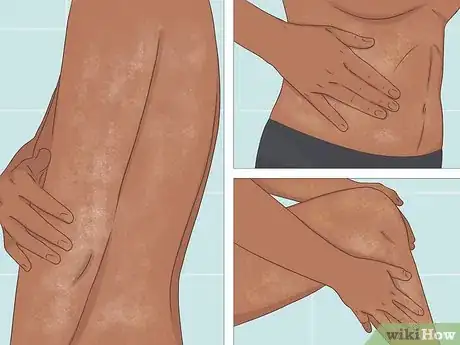
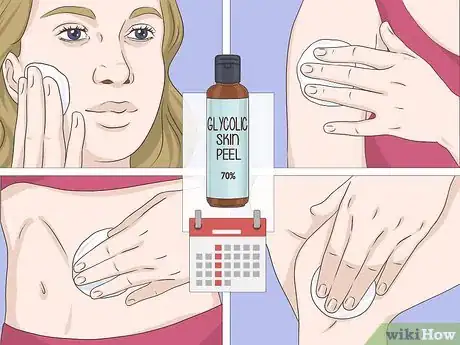


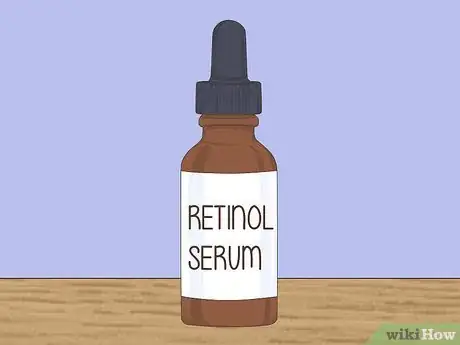

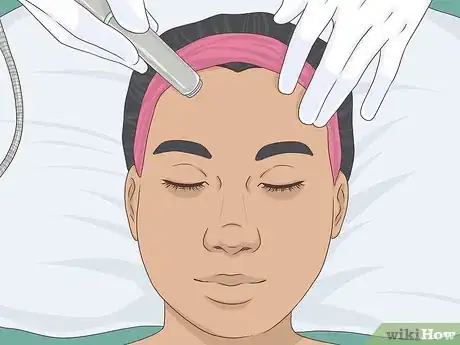
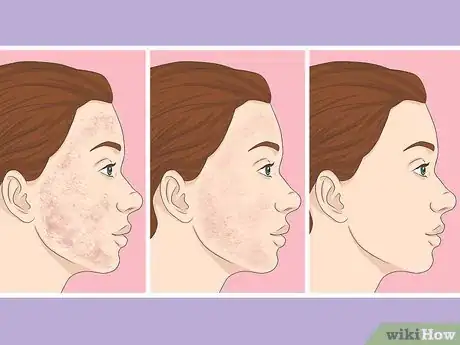

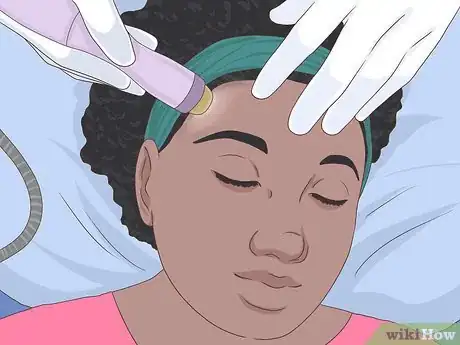



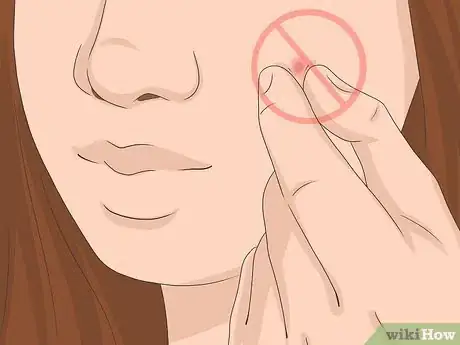


-Step-9-Version-2.webp)




-Step-1.webp)

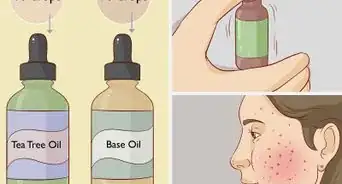
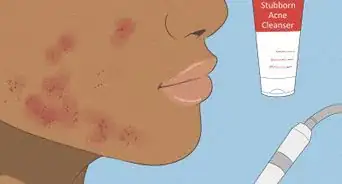








-Step-9-Version-2.webp)



































